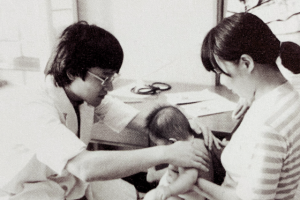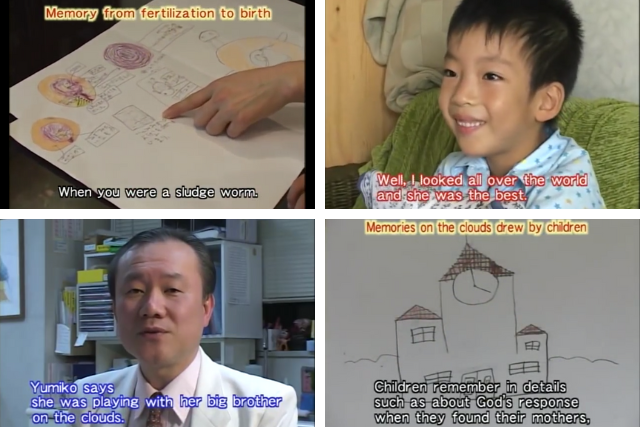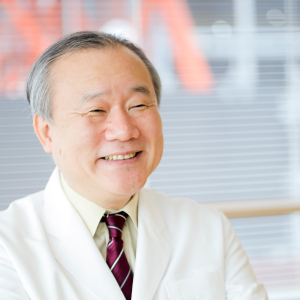81. Understanding Life Through Prenatal Memory (Tainai Kioku) – Dr. Akira Ikegawa, MD
" I was shocked about this fact and realized that I was delivering the baby early using a vacuum because I was terrified that he or she could end up dying. It made me wonder if my choice to use a vacuum had been causing tremendous suffering for the baby during birth when they could have been born naturally, without intervention." Informed Pregnancy+ is Dr. Elliot Berlin’s brand new multi platform streaming channel dedicated to pregnancy, postpartum and parenting. The Filmmakers Spotlight blog series features creators whose work is showcased on the channel. To learn more or sign up for a yearly or monthly subscription, click here!

A Profession in Dire Need of Applicants
My father was very frail, and soon after I was born, he had to undergo medical treatment in a different location. I was raised by my uncle and his wife as their adopted child until my father opened an obstetrician-gynecologist clinic in Yokohama when I was in 2nd grade. In short, I was raised by four different parents, all with different personalities. My father was carefree and my father-in-law was very strict, it seems I have a similar personality to my biological father. So, I have had four different relationships with each of my four parents, and I feel that this experience from my childhood has benefited me as an obstetrician-gynecologist.
I entered Teikyo University’s newly established medical school, and despite the fact that he was an OB-GYN himself, my father never encouraged me to pursue a career in medicine. However, according to conversations I later heard from my mother, he was quite pleased that I had become a doctor. When I was in my sixth year of university, I talked to an assistant professor of obstetrics and gynecology about my desire to go into internal medicine, and he said to me, “Half of the world is women, right? Only an OB-GYN can see women all the way from babies to the elderly. And since there will probably be even fewer people becoming OB-GYNs in the future, it will be extremely rewarding to be one of the few.” I thought the assistant professor was right and decided to become one.
On January 5, 1989, when I was 34 years old, I opened my own practice, since my wife, who was the daughter of a general practitioner, was hoping to open one as soon as possible as well. Looking back, I am glad that I opened my practice while I was still young because being an OB-GYN requires physical strength to work night and day.
An Encounter with “Prenatal Memory”
When I was a student, I was taught not to get too emotionally involved in my work, and I was instructed not to cry even in stillbirths. I think it is true that if you don’t keep some distance as a doctor, you will not be able to maintain composure and control. If you get too involved with the patient, you may not be able to get a grip on your judgment. In that sense, obstetricians and gynecologists tend to have the qualities of artisans. With that being said, I always wanted to share the moment of happiness of the birth of a new life with my patients.
During infancy checkups at that time, there were several mothers per year who would appear in the examination room looking very depressed. According to data, about 40% of mothers suffer from maternity blues. I took various approaches, such as taking time to listen to the mother’s concerns during the checkups, giving advice on parenting, and offering psychological support, but none of them worked.

In 1998, a decade or so after opening my clinic, I became interested in Prenatal Memory after reading the book “Creating the Value of Life.” At first, I was somewhat skeptical, but when I talked to a midwife at my clinic about prenatal memory, I was surprised to learn that they already knew about it. As I continued my research on the topic, I found out that the baby hears the voices in their surroundings while they are inside the womb. I started promoting Kangaroo Care and the concept of Prenatal Memory in 1999.
Until then, there were about ten emergency cases per year that had to be taken to a major hospital. Also, data showed that I was performing about three times as many vacuum deliveries as the average hospital. I was shocked about this fact and realized that I was delivering the baby early using a vacuum because I was terrified that he or she could end up dying. It made me wonder if my choice to use a vacuum had been causing tremendous suffering for the baby during birth when they could have been born naturally, without intervention.
About a year after I learned about Prenatal Memory and decided to “Trust and let the baby do what it wants,” I took the data again and found that the rate of vacuum deliveries had dropped dramatically, to about one-fifth to one-tenth of normal hospitals, meaning that I hardly ever used them. In addition, I identified that various problems at the time of delivery dropped dramatically, and I rarely had to call an ambulance. Thus, I naturally began to avoid medical intervention as much as possible because I was committed to trusting the baby’s abilities. Based on this experience, I believe that the duty of a medical professional is to monitor and support the baby as much as possible so that he or she can be born as they desire.
Educating Parents
Furthermore, I began to actively convey information about Prenatal Memory to mothers and fathers to help them develop prenatal bonding by actively communicating with the baby in the womb. I would explain that from the moment of conception, when they see or hear something beautiful, for example, they should tell their baby, “It’s lovely.” When they go for a walk, say “Nice weather,” or when they have a good meal, “Yummy.” If you are too shy to say it out loud, you can say it in your mind and your feelings towards your baby will still be expressed.Practicing communication with your baby in the womb helps avoid complications during birth and creates a positive experience. As the mothers and fathers continue to communicate with the baby in the womb, they gradually become happier. As a result, once born, the babies smile more, cry less, and make more eye contact. I wanted as many people as possible to know about Prenatal Memory in the hope that nurturing prenatal bonding with the baby during pregnancy would increase happy births.

To Promote Prenatal Memory
In 1999, I began to research Prenatal Memory and present papers on the results of my research at academic conferences in Japan, and was featured in newspaper articles and on radio shows. I soon began presenting abroad in Chile and Kuala Lumpur. In 2005, my “Investigation by Questionnaire Regarding Fetal/Infant Memory in the Womb and/or at Birth” was published in the Winter issue of the Journal of Prenatal and Perinatal Psychology. Around the same time, I was interviewed by Fuji Television for an 11-minute documentary and the following year, I made a self-produced film called “Tainai Kioku – Prenatal Memory” which is currently streaming on Informed Pregnancy+.
Through books, magazines, radio, and lectures, Prenatal Memory has gradually gained attention. In 2013, a documentary film featuring my research titled “Prenatal Memories of Children” was originally released by director Norio Ogikubo. (English, Spanish, French, Chinese, and Korean subtitles are available) Currently, the audience has reached about 320,000 viewers, by screening and streaming the film not only throughout Japan but also overseas.
Unfortunately, my clinic is no longer handling deliveries. For this reason, I am now working about half the time at my clinic and spend the other half lecturing and actively traveling around to raise awareness of Prenatal Memory. I also founded the Japan Prenatal Memory Education Association and the instructors are teaching Prenatal Memory. The concept of Prenatal Memory is gradually spreading around the world.
Since Prenatal Memory is about consciousness, we start to realize that we do not only exist physically but as multi-dimensional entities with minds and souls. Therefor pregnancy is the best time to start communication to nurture a mindful person who can create a compassionate world for the future. If we can have relationships based on the concept of Prenatal Memory throughout the world, we will be able to recognize and respect each other’s characteristics.
Together, I believe we can build a peaceful world through Prenatal Memory.
Don’t miss the latest updates, follow here!

Dr. Akira Ikegawa, MD is an OB-GYN, author, and lecturer who has an extensive background in the research of the concept of Prenatal Memory. He distributed about 3,600 questionnaires consisting of 85 questions in 2002 and 2003 and continues to interview people about Prenatal Memory. He guides expectant parents and practitioners on how to communicate with babies in the womb, and delivers lectures nationally and internationally about the extraordinary stories that he discovers from his research.
For more information: https://akira-ikegawa.com/en/
Creating the Value of Life https://iidakenkyusho.jp/english.htm
Also, related videos with English subtitles are available on the Prenatal Memory YouTube channel.


